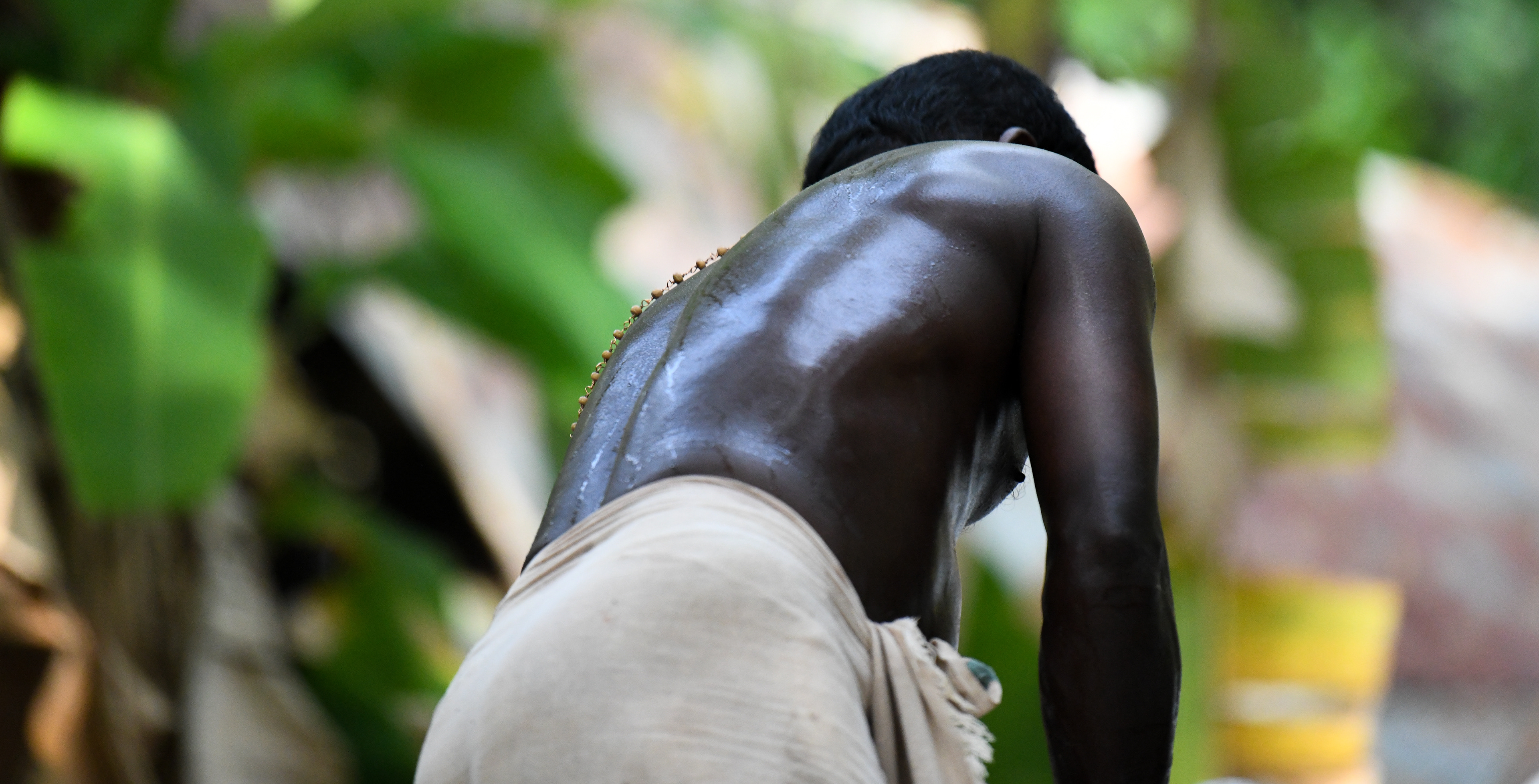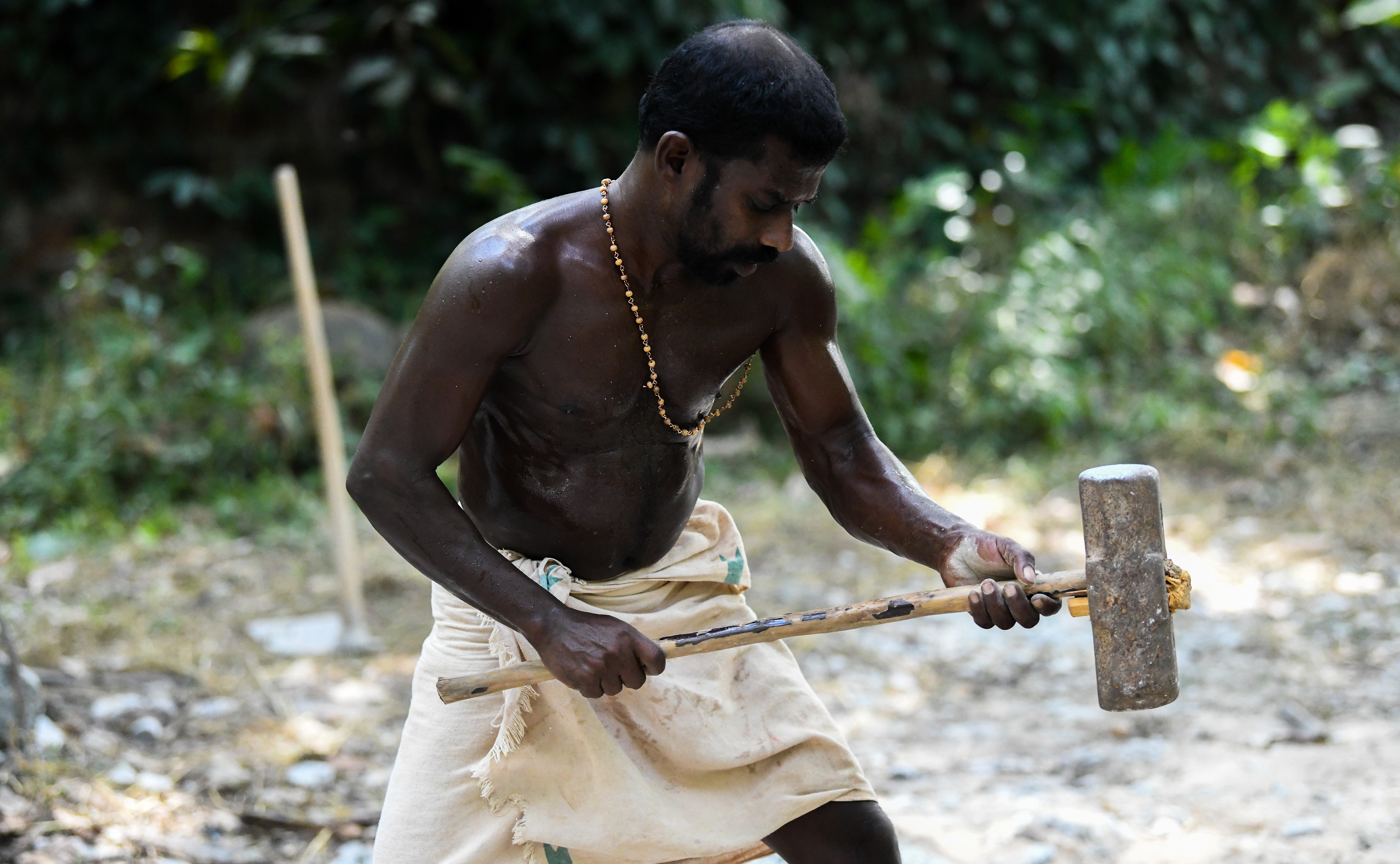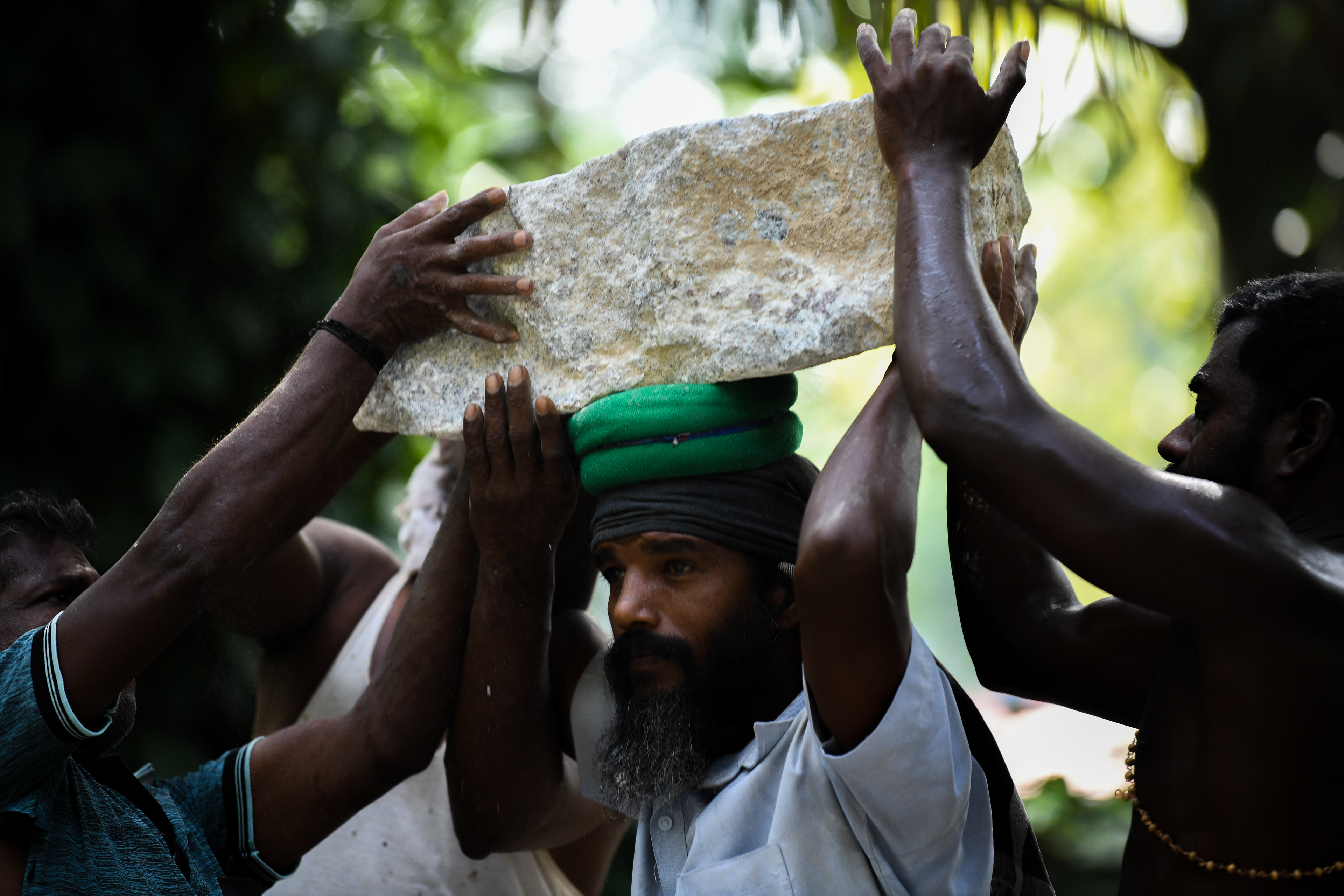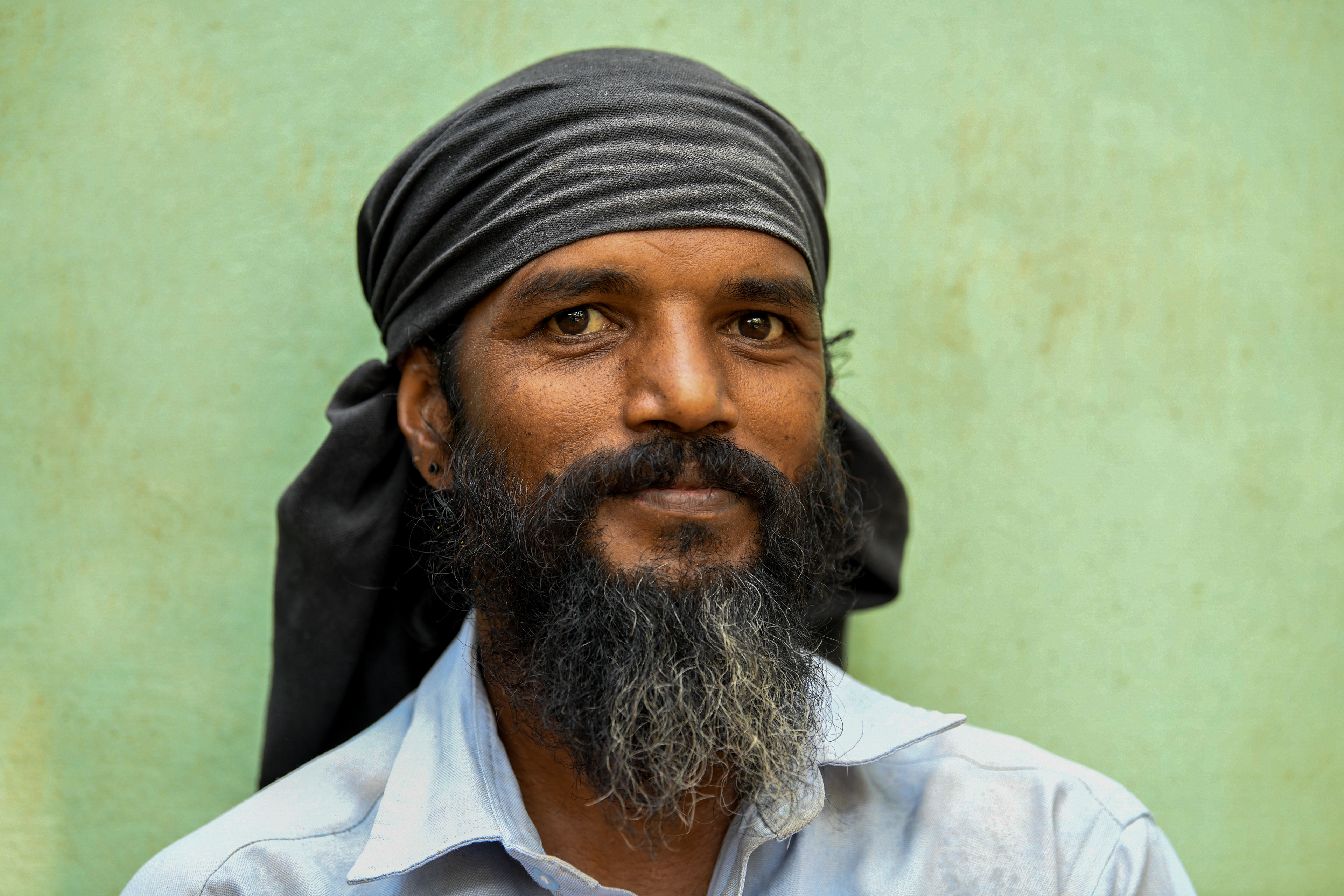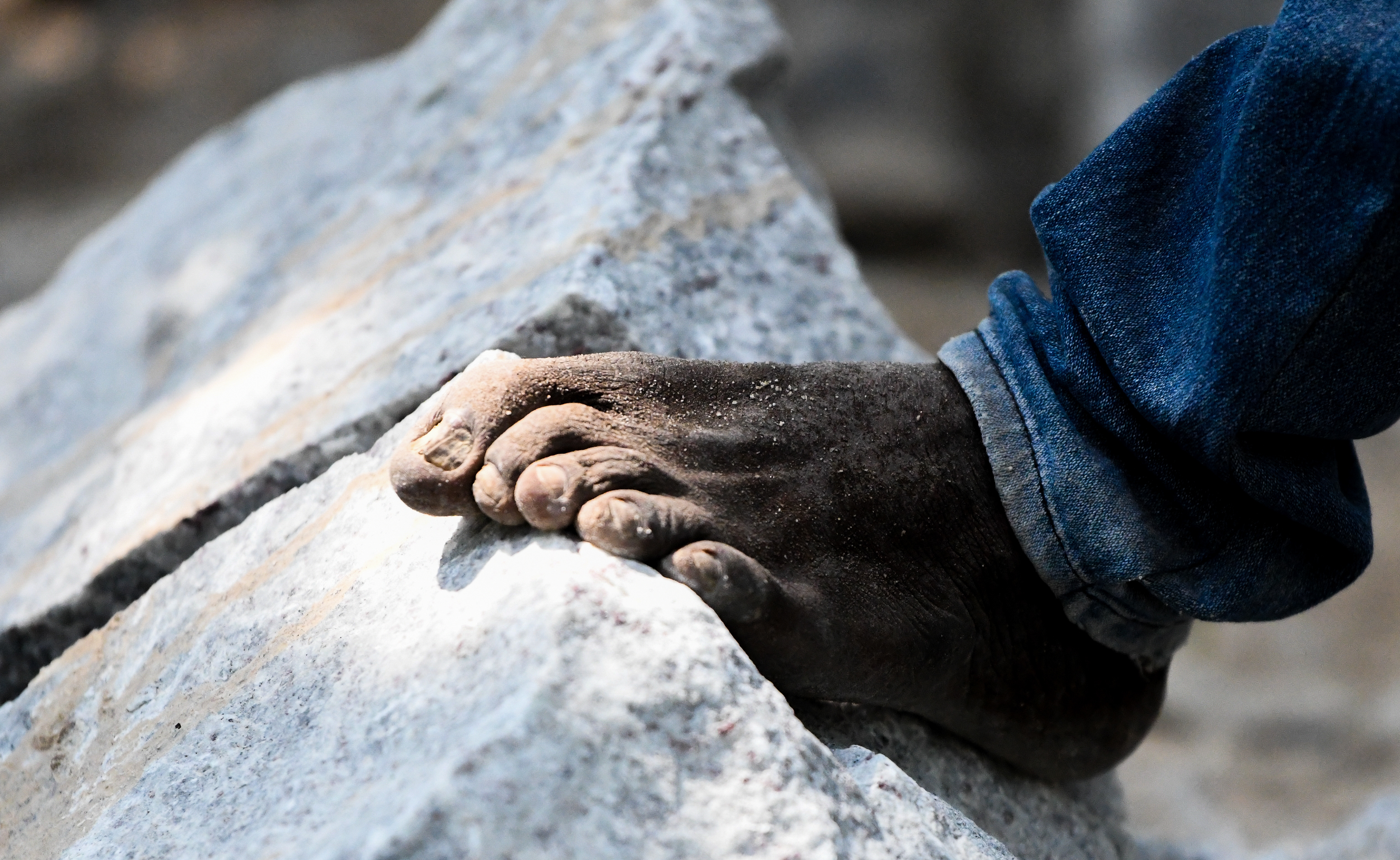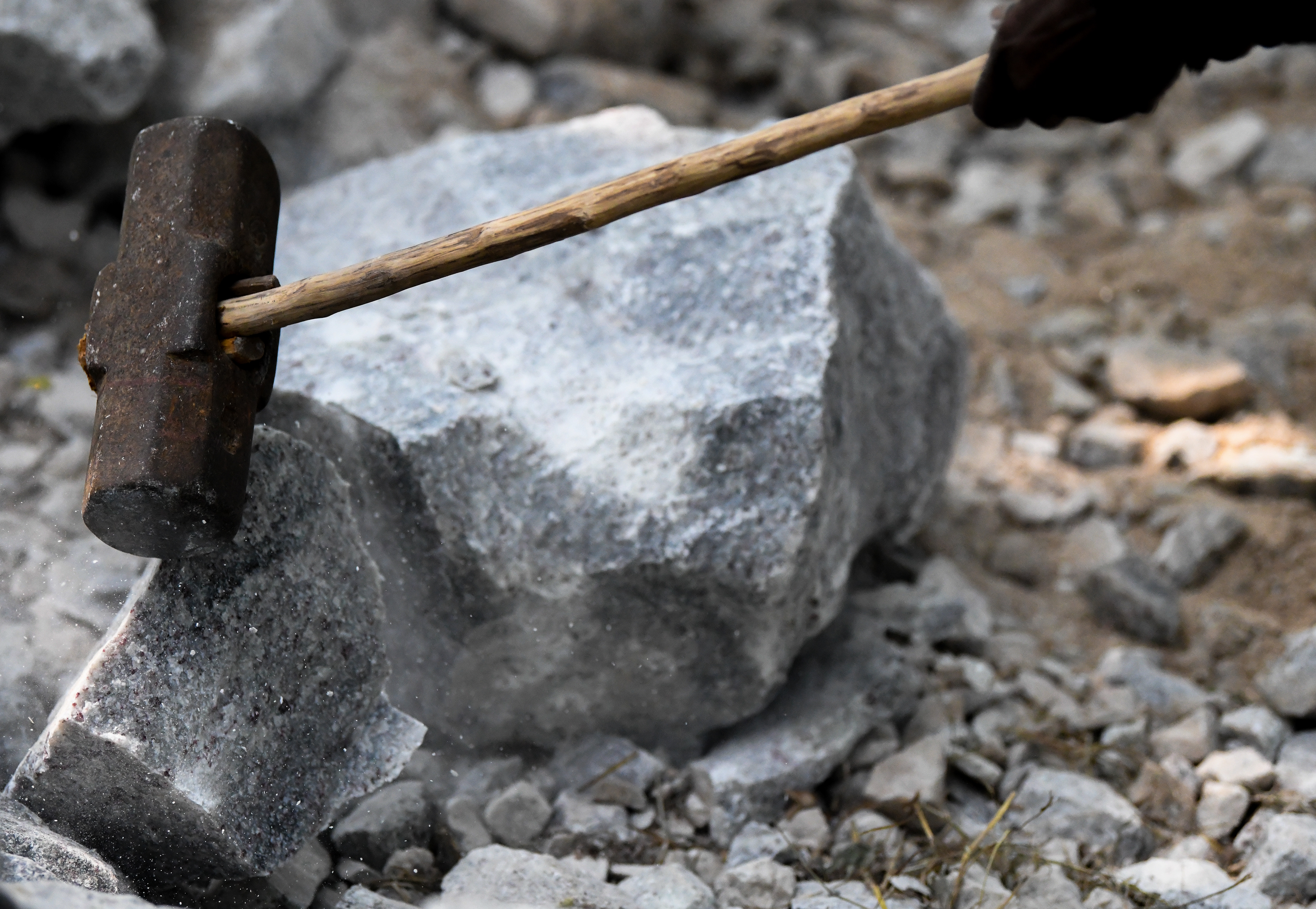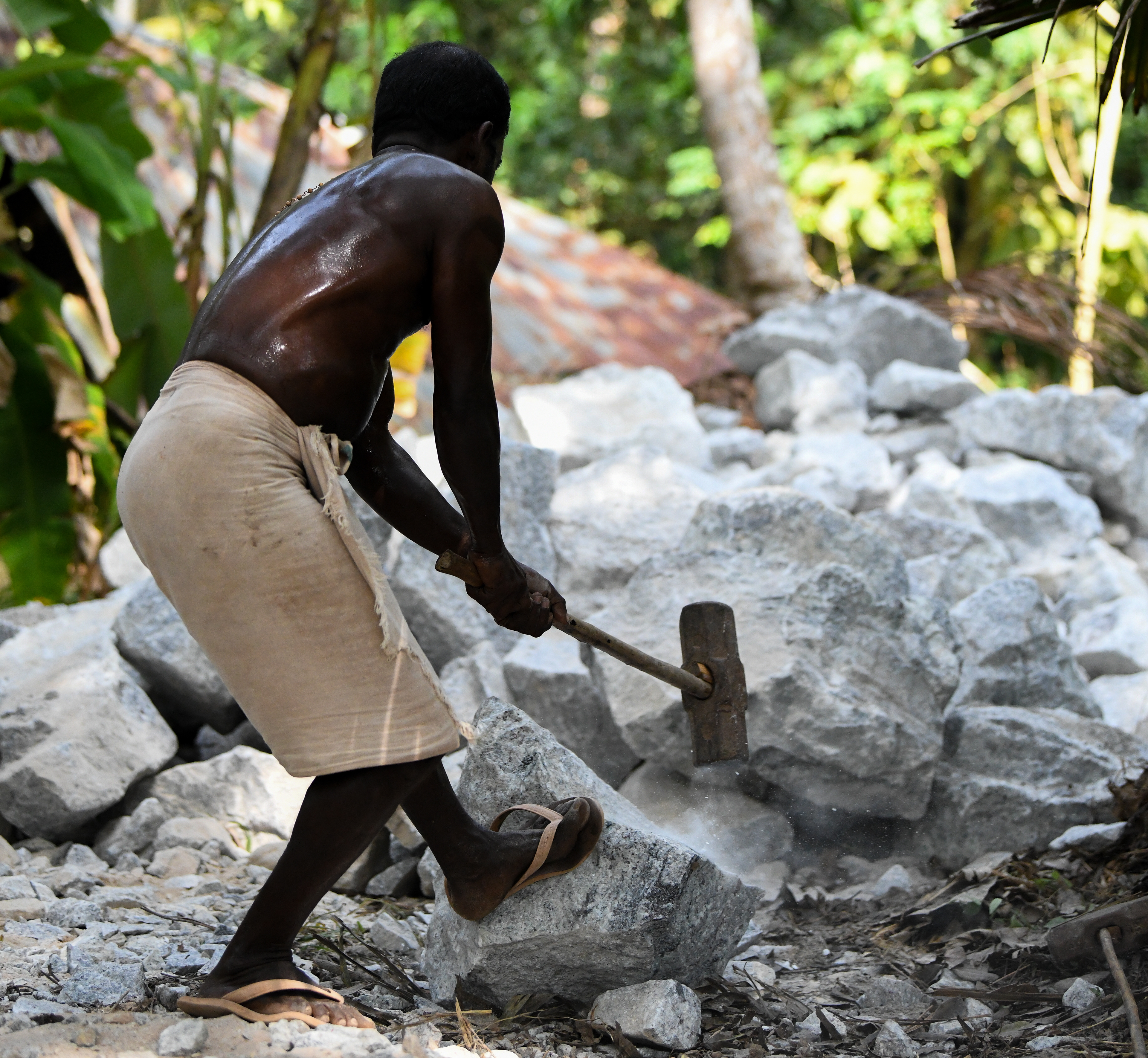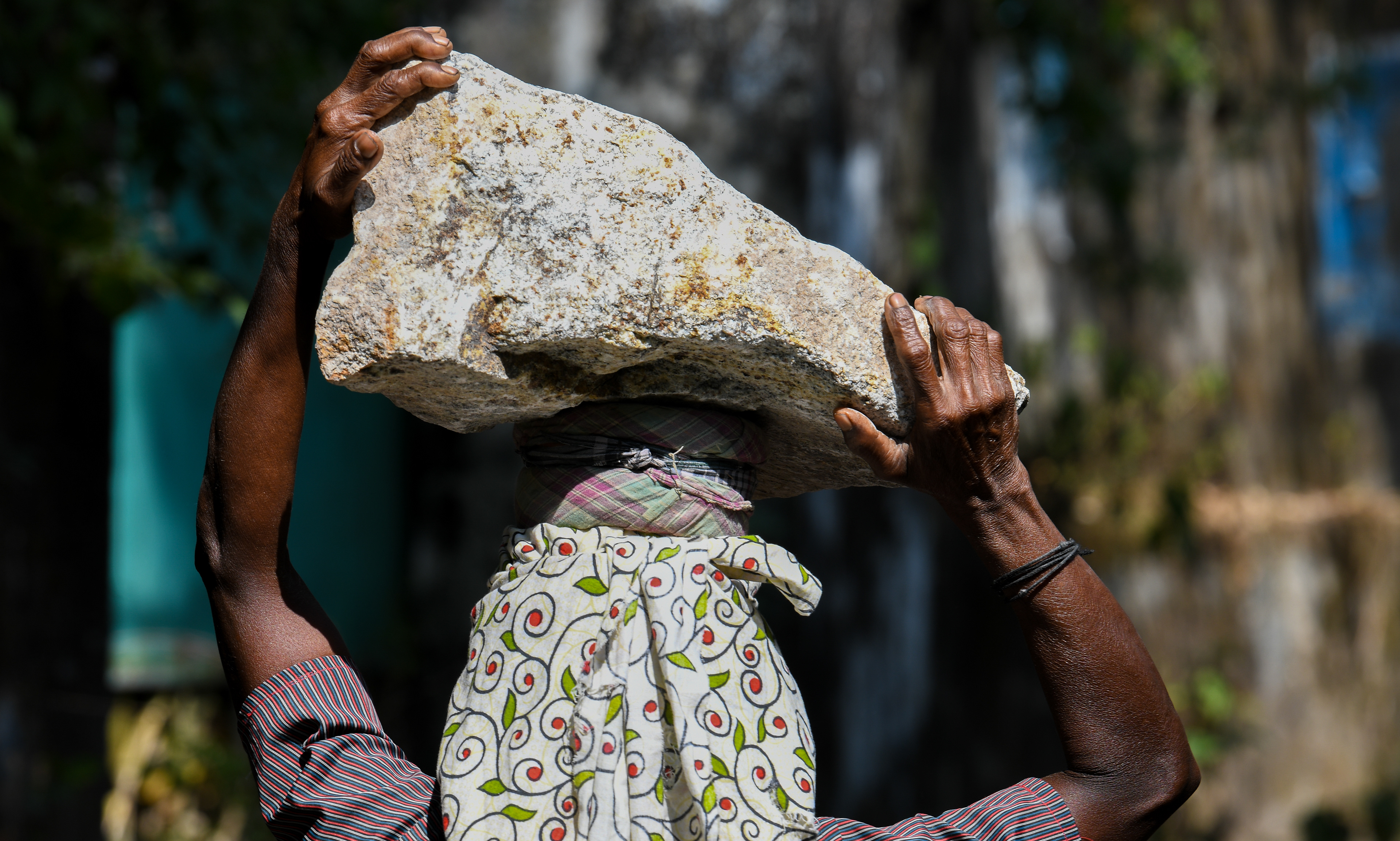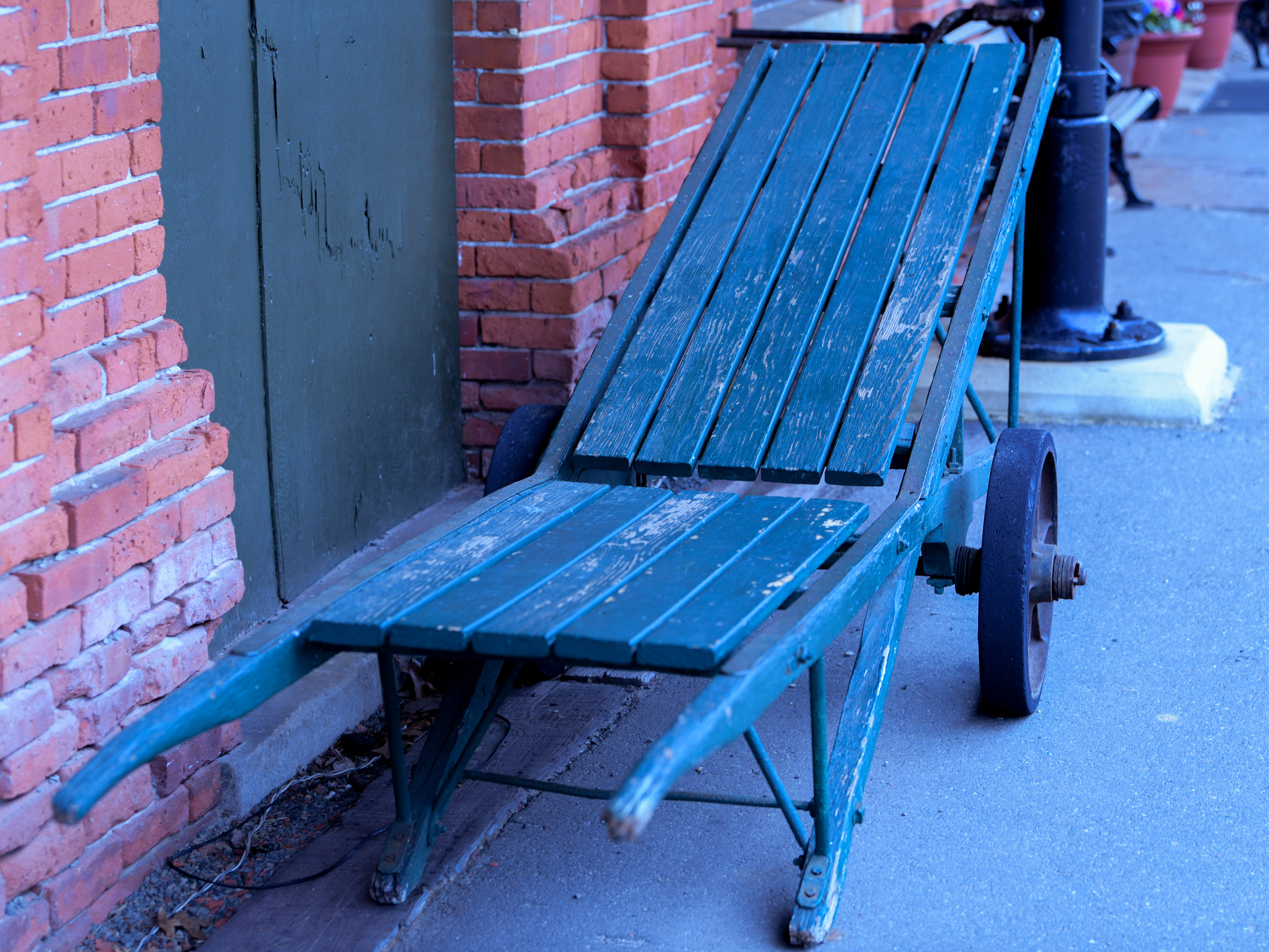There have only been a few times in my life when I have been stopped in my tracks by what was personally in front of my eyes. The splendor of the Grand Canyon, the beauty and majesty of elephants while on (photographic) safari in Kenya/Tanzania, the icy cold stares of East German VoPos in Berlin (border guards under Communism), and now...what these photos are showing (below). In late December 2019, I had just completed an emergency teacher stint for the International School of Hyderabad, India and decided to fly south to the state of Kerala to visit career-long educator friends, Indra and Nirmala Simhan. We were together in the American School of Kuwait as well as the International School Manila. Although Kerala is the most affluent state in all of India (no poverty to speak of), one day while walking the neighborhood with Indra, I came upon these folks at the site near a new house that was scheduled to be built. More about that in the last paragraph.
Once I was able to process what I was seeing, I became stunned and humbled at the same time. As you read this, I think you can surmise that I am not intending to be funny when I say that I remember a 1977 song entitled, "I Fought the Law and the Law Won." The first line of the lyrics were, "Breakin rocks in the hot sun....I fought the law and the law won." And of course, the lore of breaking rocks or breaking big rocks into smaller rocks (going to jail and doing hard labor) is part of the history and culture of many countries. Yet, here they all were - both men and women - right in front of my eyes, working so hard, that it was almost too painful to watch. "Luckily" for me, I go almost nowhere without my camera and lenses at arm's reach. Still barely able to process what I was seeing, I asked my friend Indra to translate that I was requesting permission to take their photos while they worked. They immediately said yes and seemed baffled as to why I would even ask. On the contrary, they were a bit concerned about me getting too close because they did not want me to get a shard of (granite) rock in my eye as they pummeled away. This was not to be confused with the fact that, on occasion, the head of the sledge hammer would fly completely off the bamboo handle it was wedged on. Looking at the whole thing from the perspective of a citizen of a developed country, you only have to give these photos a quick glance to see the toil. Aside from the raw manual labor they capture, there was no eye protection, no foot protection...indeed, no protection of any sorts. In fact, as you can see, one of the men swinging the sledge hammer was in his bare feet.
During one of their breaks, again with my friend Indra doing translation, I chatted them up. I told them that in my opinion, when it came to respecting human beings, "They were/are everything and that I was nothing" - and that I was appreciative to be in their presence. At my request, Indra made sure he interpreted my comments exactly as I meant them. Therefore, it was no surprise when it came back to me that these guys were grateful for my thoughts. About two hours later - when my camera's memory card became unexpectedly filled - I gave the work crew 1500 rupees (about $20) to share among the 16 of them. Unsurprisingly, they were quite appreciative. For those of you who are wondering about the "why" of rock-breaking, the quick answer is as follows. As opposed to the type of (solid) concrete foundations that the much of the world is currently used to, in India, stone masonry foundations / footings are still quite common for single family dwellings. Typically, a truckload of very large rocks from a regional quarry is delivered to a (as close as possible) spot near the building site. From that point onward, it is the job of these amazing workers to break these big rocks into smaller rocks.
In ending this informational blurb, perhaps you have read this verbose description of what went on here - perhaps not. In either case, I have a request. It would make my heart smile if you gave these individual photos a closer look - preferably on something larger than a cell (mobile) phone. And while doing so, don't forget to click on or tap the screen so as to enlarge them. After having done that, I invite you to go to Part Two of this photo essay where the emphasis is on the "Head-loaders," most of whom are women. Enjoy ! T.M.



